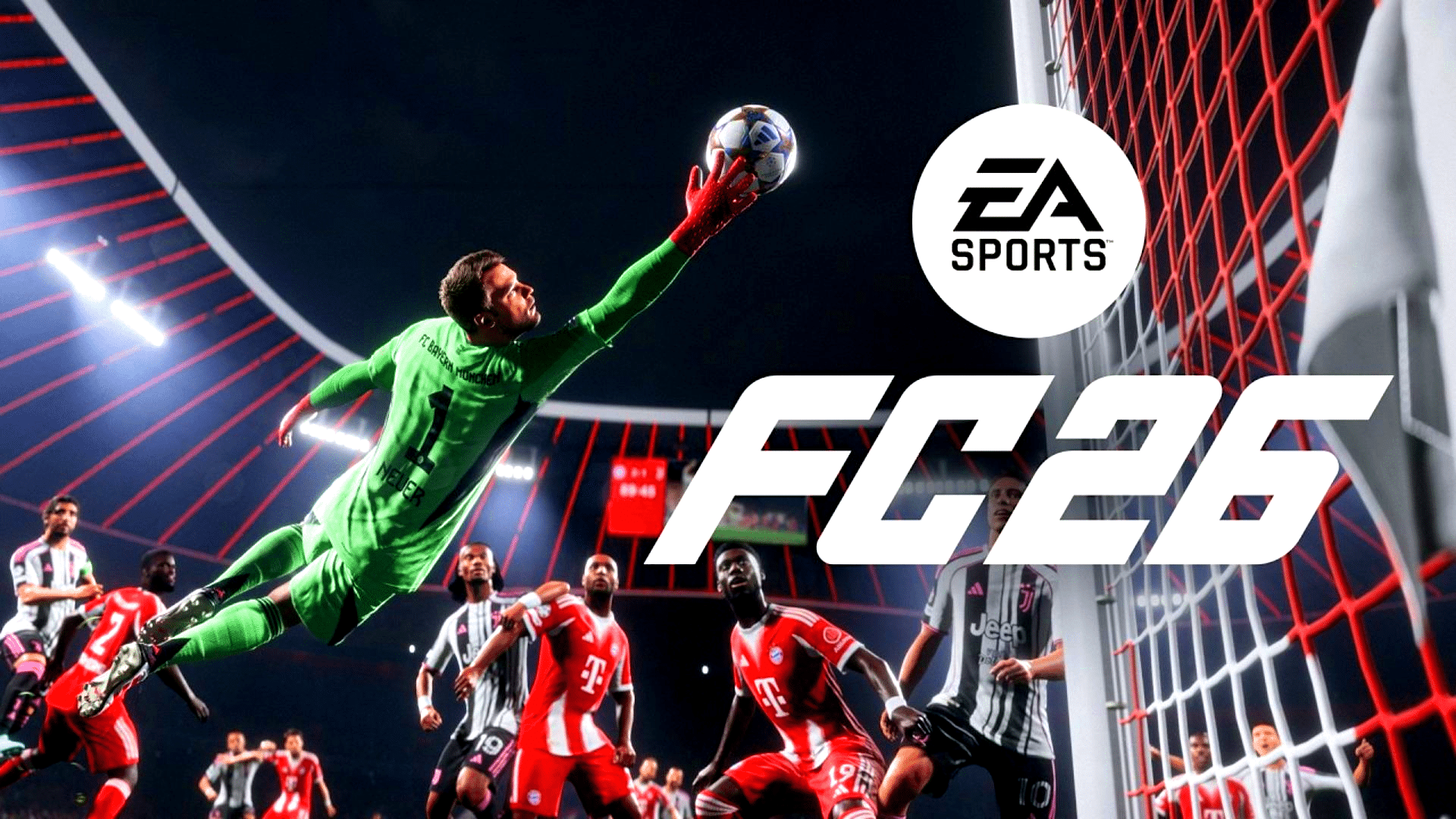EA Sports FC 26 promises major improvements to career mode, but despite useful new features such as coach changes and authentic gameplay, hopes for a real breakthrough remain unfulfilled.
Career mode in EA Sports FC hasn’t had it easy in recent years. While Ultimate Team always received the most attention, the classic single-player mode often seemed like the unloved stepchild – too little innovation, too much baggage, too many promises that fell by the wayside in the hectic development cycle.
And yet, the fan base is there. According to EA, millions play Career Mode, many of them every year for over a decade. With EA FC 26, the team now wants to show that it hasn’t forgotten these players. More realism, more dynamics, more depth – and a new live system that should bring a breath of fresh air. But is this really a major overhaul or just another drop in the ocean?
Disclaimer
Electronic Arts invited us to its development studio in Vancouver to take a look at the new features in EA Sports FC 26. The publisher covered our travel expenses.
Manager Live: Lots of ambition, but not for everyone
The first major new feature is called Manager Live Hub
: With this, EA wants to free the career mode from its static nature – away from the same old club career and toward a modular experience that changes week by week.
Live challenges are designed to appeal to both beginners and hardcore fans: staying in the league with point deductions, winning the Champions League with only German players, transfer bans or age limits – what was previously left to the imagination of the Reddit community is now integrated into the game as challenges.

A lot of attention to detail has gone into the implementation: goals, restrictions, and scenarios can be flexibly combined, and rewards such as retro jerseys or career boosts await at the end. Those who battle their way through the tasks can even unlock icons and heroes for new careers. And if you want, you can share challenges with friends or compete in the most played challenges worldwide.
But despite all the playful potential, one question remains: Is the community really that keen on it? We can’t quite imagine it – so we asked around.
Career Mode Producer Andreas Wilshoff admits that many players are skeptical about the live service principle. The desire for freedom and individuality clearly conflicts with these predefined scenarios. Those who simply want to develop their favorite club realistically over the years may ignore the live challenges – or even find them a distracting nuisance.p>
Finally some movement on the sidelines
One of the biggest criticisms of the career mode in recent years was its rigidity. Club changes for coaches? Not a chance. Players who progressed through ten years in the game often found themselves in the same situation as when they started – a detail that eventually made any long-term career seem implausible.
In FC 26, EA is finally bringing some movement to the game: with the new Manager Market, AI coaches can now also change clubs – voluntarily, through poaching, or by being fired. Players themselves can apply for open positions if they impress with their performance, philosophy, and club profile. Suitable clubs are automatically suggested, and the system checks reputation, tactical vision, and previous successes.

The result is a more dynamic soccer world where things happen off the pitch as well. A change in coaching staff at a rival club means not only new faces on the sidelines, but also tactical adjustments, different transfer targets, and noticeable changes on the field.
Teams play differently because their coaches have different ideas about the game – exactly what the mode was missing before.
But: For Career Mode, it’s a long overdue step forward that not only adds realism, but also opens up new story possibilities. Even if most of these will only play out in your head.
Gameplay finally taken seriously
A frequently underestimated point in the discussion about career mode is the gameplay itself. While Ultimate Team is geared towards speed, skill moves, and quick reactions, many career fans want one thing above all else: realistic, tactical soccer. Until now, there has been a huge gap here, but with FC 26, EA is consciously aiming to close it for the first time.
The new Authentic Gameplay
mode gives Career Mode its own, slower-paced feel. The tempo is lower, tackles are harder, players move more realistically, and ball physics and positioning come to the fore.
Instead of sprint duels and skill spam, it’s now all about space control, build-up play, and smart decisions.
According to producer Andreas Wilshoff, this split was a direct response to community feedback – and a conscious decision by the team. Many people say they don’t like the career mode because the game feels unnatural – but what they really mean is the gameplay
, he says. With the new system, players can now choose freely: authentic or competitive.
How well this works in practice remains to be seen.
As impressive as the presentations surrounding EA Sports FC 26 were – from developer interviews and studio tours to a real soccer session on EA Vancouver’s own small field – the actual hands-on time with the game itself was relatively limited.

We were able to try out the authentic gameplay, but only in a few short matches – too few to really get a feel for the long-term effect or balance. However, what we saw gives us hope: a calmer pace, more intense duels, more realistic movements. But only long-term testing will show whether the new gameplay will hold up over several seasons.
For simulation fans who value atmosphere, gameplay, and real soccer, Authentic Gameplay is probably the most important step in recent years. EA has finally recognized that career players have different demands when it comes to gameplay – and is at least starting to meet them.
More data, more depth
Anyone who doesn’t just play career mode occasionally, but lives it, knows the problem: the game world often felt like a pretty backdrop – but never like a real soccer ecosystem. Talents popped up out of nowhere, leagues developed without any discernible logic, and transfers seemed arbitrary.
With FC 26, EA wants to change exactly that – and is relying on data, statistics, and comprehensible developments. The most important point here is the new simulation logic, which allows up to five additional leagues to be fully simulated alongside your own. This results in more credible transfer markets, more competition for talent, and more dynamic interaction between competitions. For example, if you manage in Germany and simulate Spain, Italy, and England at the same time, you’ll experience a soccer world where there’s noticeably more going on.

What’s more, historical performance data is now available directly in the game. Who were the best playmakers last season? Which teams traditionally concede the fewest goals? This information not only flows into the game world, but also helps with scouting. Talents can be observed more closely, form curves can be better classified, and decisions are made less on gut instinct.
EA has also made improvements in the details: Scouting reports now show more potential information, player statistics can be filtered by competition and season, and the table view has been modernized.

Unexpected Events: The unrest that the mode needs?
In every real coaching career, there are moments that turn everything upside down: injuries at the worst possible moment, unrest in the boardroom, media pressure, or players who suddenly announce they want to leave. All of this was missing from Career Mode until now – or only appeared as text windows with little consequence. With FC 26, EA is now bringing Unexpected Events into the game.
EA distinguishes between two types: Emerging Scenarios, such as rumors, player moods, or unpredictable disruptions, and Decision Points, where you, as the manager, have to make specific decisions. For example, whether you accommodate a dissatisfied star player. Your reactions affect morale or your standing with the club’s board.
The good news is that if you prefer peace and quiet, you can reduce the influence of events in the settings or disable them altogether.
A step in the right direction – but not for everyone
FC 26 offers many things that career players have wanted for years: a new coach, more statistics, slower gameplay, and a world that feels more believable than ever before. And yet the impression remains: Once again, this is more evolution than revolution.
The impression we got on site was that the team behind the mode is really passionate about it.
During lunch, we had the opportunity to talk to Andreas Wilshoff, line producer at EA, in private. It quickly became clear that this man loves career mode. Not only professionally, but also privately, he says he used to be a huge fan of the Master League from the PES days. And since this mode no longer exists, he now wants to fly the flag for career players at EA.
He never said it explicitly, but it was clear between the lines: Career mode is not as high a priority at EA as other areas of the game. The budget is being spent elsewhere, such as on Ultimate Team. The career mode, on the other hand, actually seems like the unloved stepchild mentioned at the beginning, who is allowed to sit at the dinner table but isn’t allowed to ask for anything extra.
Nevertheless, FC 26 is not a step backwards for career fans – on the contrary: many areas in need of improvement have been tackled and some long-standing wishes have been fulfilled. But anyone hoping that EA will completely overhaul the system should slowly bury that hope. Career mode will never achieve the strategic depth or system complexity of Sports Interactive’s Football Manager – it simply lacks the priority.
What we get instead are annual updates in small steps. Sometimes clearly visible, sometimes more cosmetic.
Authentic gameplay could be a big step forward – if you play a lot yourself and value a realistic soccer simulation. On the other hand, those who simulate a lot will once again have the feeling this year that things are moving forward, but at a walking pace rather than a sprint.
